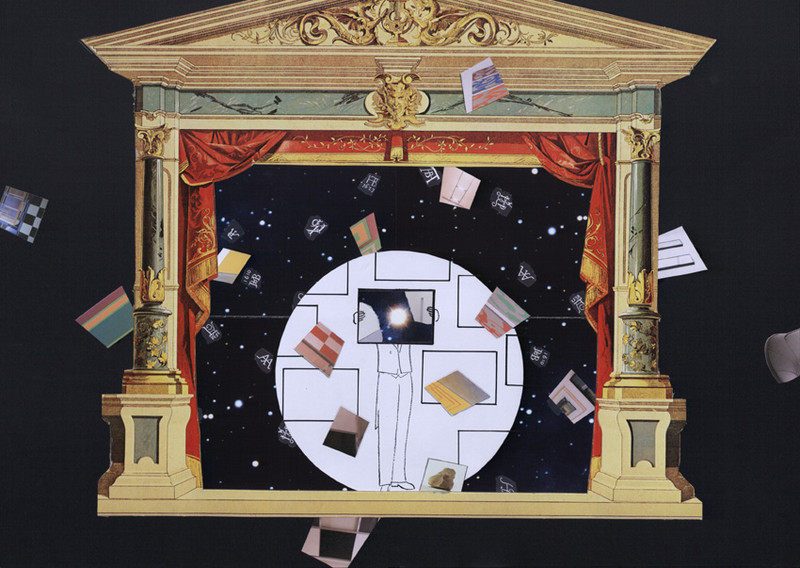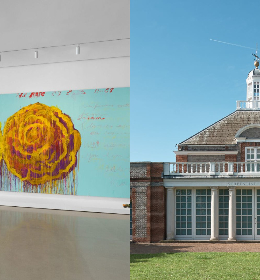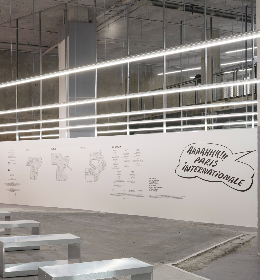Hannah Höch
The German artist (1889 – 1978) associated with the Dada movement is one of the first figures to jump to regarding collage. Between 1919 and 1920, in the wake of the First World War, the artist created an iconic work, Cut with the Dada Kitchen Knife through the Last Weimar Beer-Belly Cultural Epoch in Germany, symbolizing the political chaos stretching throughout Germany. A painting by the artist took $1.38m at auction last June at Christie’s NYC, whilst a collage was sold at Sotheby’s in 2012 for $230,000.

Hannah Höch, Cut with the Kitchen Knife Dada Through the Last Weimar Beer-Belly Cultural Epoch of Germany, 1919-20
Giulio Paolini
Linked to Arte Povera and Conceptual Art, the Italian artist (b.1940) has seen his work form part of collections at the Pompidou Center, Amsterdam’s Stedelijk Museum and the Tate Britain. Represented by high-profile galleries such as Repetto, Alfonso Artiaco, Lisson and Marian Goodman, Giulio Paolini – whose artistic practice covers sculpture, installations and collages – has a unique focus on dialogue between the ages. Here, classic antiquity and and the modern-day intertwine, and the artist’s desire to make a piece a “theatre of evocation” is incredibly present in his collages.

Giulio Paolini, Studio per 'Circo massimo' (2011), collage su carta
Linder Sterling
Born in Liverpool in 1954 and named “Linder”, the artist is often considered as radical. The artist uses collage – or rather “auto-montage” – in her punk, feminist work to denounce the image of women as being “nothing but commercial objects, or sex toys” that is pushed by the press and magazines, particularly those targeted at men. Represented by the galleries Dépendance (Brussels) and Blum & Poe (Los Angeles), Linder aims to “replicate the original but at the same time subvert their original meaning.” If her approach could be summed up in one sentence, it would be that by The Guardian: “With collage, you make things wrong to make them right.”

Linder Sterling, Kitchen
Troy Michie
Represented by New York-based gallery Company, the American artist (b.1985) works mainly with the question of identity – in the broad sense of the term – and of gender. Thus his work was shown last year at the New Museum during the exhibition “Trigger: Gender as a Tool and a Weapon”. The artist displayed bodies and symbols of queer culture through utilizing collage to transform the male nude and to bring a critical dimension to the ensemble of this imagery and that which spreads it. As he explained recently to Vice, “I think collage is an amazing medium to approach these kind of issues.”

Troy Michie, La Bicicleta (2015) Digital Inkjet Print Collage 42” x 31.5”
Sheida Soleimani
The daughter of a political refugee persecuted by the Iranian government during the 1980s, the young artist (b.1990, Cincinnati) puts collage at the heart of her practice. “I think collage as a technique is itself political”, the young artist explained to us. Describing her practice and the power this medium carries, Sheida Soleimani said that “the idea of cutting an image and re-assembling it to create a new Frankenstein-esque image holds power and violence within the medium itself. I specifically choose to use images from media that are not heavily circulated- the images often times are themselves violent, and by manipulating them to become more aesthetically pleasing on first impression, I aim to get my audience to be seduced into viewing difficult content.”

Sheida Soleimani, Inauguration, United States & Iraq (2016). Archival pigment print.
Henri Robert









